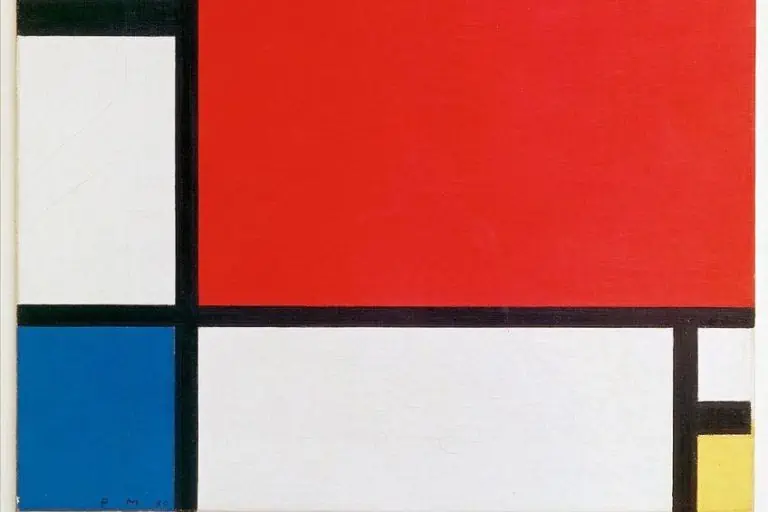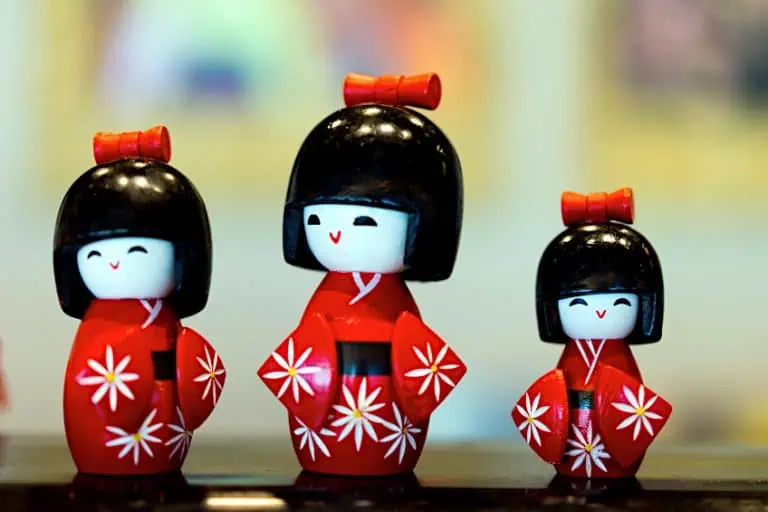How to Get Inspiration for Art – Find Inspiration and Creativity for Art
This post may contain affiliate links. We may earn a small commission from purchases made through them, at no additional cost to you.
Finding inspiration for art can often be challenging. Where does artistic inspiration come from, and where can one find fresh art inspiration ideas? In this article, we will find out how to get inspiration for art when you are stuck in a creative rut. Join us below as we show you how to get your creative juices flowing once again!
Table of Contents
How to Get Inspiration for Art
You can’t sit around waiting for art inspiration ideas to strike. You’ll wind up delaying it and achieving no artistic development if you do. So, if you’re feeling uninspired, you must be proactive in order to rekindle your artistic inspiration. Finding inspiration for art is not always easy, though, particularly if you are not too certain where to begin to look.
However, our guide will show you the various ways that you can come up with new art inspiration ideas in order to prevent any further creative blocks.
What Is Artistic Inspiration?
The act or state of being mentally motivated to accomplish or produce anything, particularly in the domains of literature, art, or music, is referred to as inspiration. The creative process is ignited by an ember of motivation or a source of ideas. Inspiration is important in art because it provides the first motivation for an artist to begin their work as well as guide the process. In art, inspiration plays a wide variety of roles. It acts as a catalyst for the artist’s creativity, allowing them to produce fresh and distinctive concepts that they can apply to their art. It serves as a source of energy and motivation for the creative process.
Artists are inspired to experiment with new styles, techniques, and subjects, allowing them to create original works of art for others to enjoy.

Types of Inspiration
The natural world’s beauty and complexity have long served as a great source of inspiration for many artists. Nature’s textures, colors, patterns, and organic shapes can serve to stimulate the artist’s senses and elicit emotional responses, resulting in the production of beautiful landscapes, still lives, and abstract works. Emotions, personal experiences, and relationships may all have a significant impact on the artwork of an artist. Artists sometimes draw inspiration from their own or other people’s lives while addressing subjects such as love, joy, suffering, loss, or societal concerns. Artists can create artwork that resonates with audiences on a deep emotional level by tapping into the universal qualities of the human experience.
Exposure to different art forms and art history can improve an artist’s creative viewpoint as well as serve as a rich source of artistic inspiration.

Artists have often been influenced by their cultural and socioeconomic settings. Historical events, cultural traditions, societal challenges, or political movements can therefore also provide many art inspiration ideas. Creativity and inspiration are inextricably linked. While inspiration gives the spark, creativity is the capacity to turn that inspiration into something practical and unique. Inspiration drives creativity by providing the raw material, concepts, or thoughts from which the artist may mold, polish, and materialize their artistic vision. Creativity is the combination of artistic inspiration, technical ability, and personal expression that results in the creation of one-of-a-kind artworks.
Finding Inspiration in Daily Life
Most of the time, we don’t actually have to look too far to find sources of inspiration. In fact, we can just look at the world around us to find a constant stream of potential ideas. We can find inspiration in everyday objects, nature, our own emotions, and other people.
The Beauty of Everyday Things
The beauty of everyday things involves discovering inspiration in ordinary things, situations, and small details surrounding us in our daily lives. We sometimes neglect or take for granted the more ordinary parts of our daily lives. Yet, by paying close attention and looking carefully at the world around us, we might find beauty and motivation in a variety of unexpected places. Stop in a forest and observe the gentle dance of light and shadows in your surroundings, for instance. Appreciate the textures and colors of the foods you eat, how the vivid hues on a conch shell might inspire an artist, or how the complex patterns could inspire a textile designer.
Aside from visual beauty, ordinary noises, scents, tastes, and tactile experiences can likewise provide inspiration.
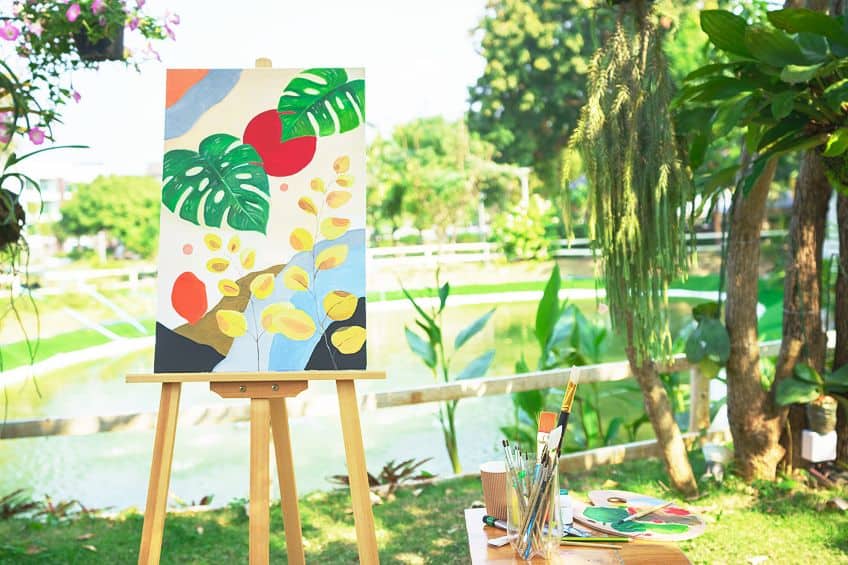
Raindrops on a window, the smell of a freshly brewed cup of coffee, the texture of a fresh apple, or the feeling of running your fingers through the sand at the beach—all of these sensory sensations can give rise to creative thoughts and ideas. You can teach yourself to see and appreciate the often-overlooked subtleties of your environment by developing a feeling of awareness and being present in the moment. Keep a notebook or a camera available to document these moments of inspiration. Documenting these ordinary events may be a valuable resource for future artistic endeavors and a source of inspiration for your goals.
Inspiration in Nature
Immersion in natural settings, whether a woodland, a range of mountains, a stretch of coastline, or a botanical garden, enables you to observe the beauty of nature and harmony. Take note of the interaction of light and shadow, the balance of colors, the forms of trees and plants, and the flow of water. These elements might be used to inspire new creative compositions, color palettes, or even concepts for topics. Flowers, leaves, seashells, and animal patterns are among the many intricate and diversified organic structures seen in nature.
Examine the natural elements’ intricacies, forms, and textures.

Observing the delicate veins of a leaf or the conical shape of a conch shell may lead to the discovery of new patterns and textures that you can incorporate into your own in your own work. Nature offers a calm and tranquil environment that can foster contemplation and creativity. Find time to detach from the stresses of daily life while spending time in natural places that speak to you.
Using Your Emotions for Artistic Inspiration
Allow yourself time to look into and reflect on your own emotions. Consider the events, memories, and connections that elicit intense emotions in you. Allow yourself to experience pleasant and negative feelings like joy, sadness, love, rage, or fear. Journaling or meditation can be beneficial techniques for delving into your emotions and learning about their nuances. Use your art to communicate stories and express emotions.
Experiment with ways for more effectively capturing and expressing emotions.

Utilizing forceful brushstrokes or brilliant colors can portray energy and enthusiasm, for instance, or utilizing subtle, fragile lines and subdued tones to depict sorrow or contemplation. Art has the ability to elicit emotional responses from others. Think about how your work can elicit a sense of empathy or connect with your audience’s emotions. Use your work to explore shared human experiences and establish a sense of shared humanity and connection.
Finding Inspiration in Other People
Finding inspiration in other individuals is yet another way to spark your creativity. People are intriguing subjects, each with their own unique stories, emotions, and characteristics. People’s facial expressions, gestures, and postures convey a richness of emotions and narratives. Pay attention to the nuances of how humans interact with each other and how emotions manifest themselves in various people.
Take note of how others exhibit their delight, sadness, or vulnerabilities.

These insights can motivate you to create artwork that expresses the essence of human emotions. People around the world have a wide range of traits, histories, and identities. Create work that explores various personas to discover the extensive range of human characters. Consider depicting people from other ethnicities, occupations, or walks of life. This study can result in thought-provoking art that illustrates humanity’s diversity and connectivity.
Exploring Various Art Forms
One of the best ways to find inspiration is to explore the various art forms out there. Art is comprised of multiple disciplines, each with its own unique traits and techniques. Traditionally, visual arts include drawing, painting, sculpture, printing, and ceramics. These kinds of art are largely concerned with producing visual representations using various materials and techniques. Performing arts encompasses disciplines that include music, theater, dance, and opera which entail live performances.
These various art forms emphasize artistic expression and narratives via the use of movements, sounds, and voices.
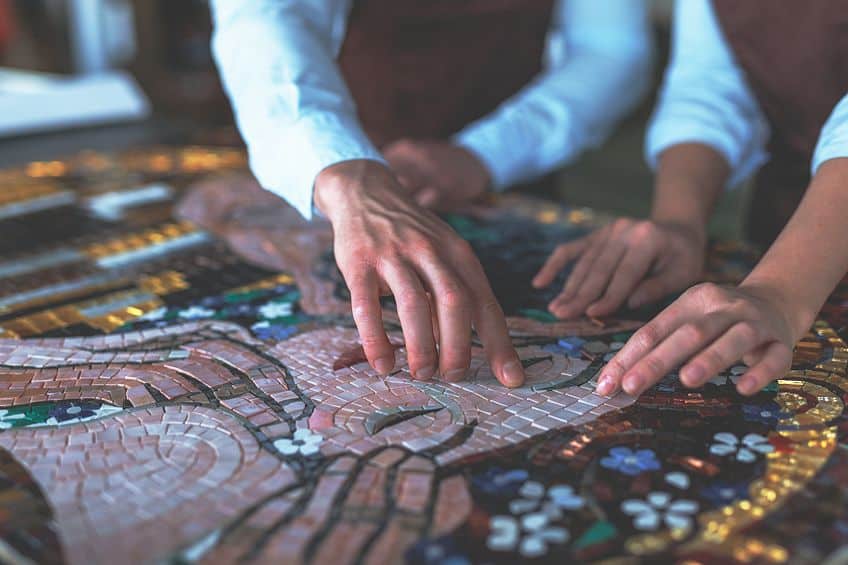
The literary arts include all kinds of written expression, such as novels, poems, plays, and essays. Film, animation, photography, and digital media are all important components of modern art. The practical use of creative talents and aesthetics to produce practical items and designs is the concept of applied arts. Interior design, architecture, fashion, and industrial design are some examples.
Finding Inspiration in These Artforms
If you wish to be inspired by the visual arts, go to museums, art galleries, or exhibitions to see works by known artists and rising artists. Examine how they employ color, composition, brushwork, and sculptural methods. Understand the growth of creative styles and concepts through studying art history and various art trends. Study the works of artists from many eras and civilizations. If you’re looking for ways to be inspired by the performing arts, attend live performances such as concerts, dancing recitals, or plays. Watch how the performers move, express themselves, and engage with the audience. Listen to the inspiring music of all genres and styles. Take note of the melodies and emotional undertones expressed by the music.
Watch films from many genres, regions, and eras if you wish to be inspired by them.

Think about the visual narrative, cinematography, editing methods, and sound design. Explore how filmmakers employ various lighting, camera angles, color palettes, and music to elicit emotional responses and enhance the narrative. Study well-designed products, buildings, or settings in your daily life to receive ideas from the applied arts. Pay close attention to the aesthetics, usefulness, and precision in their designs. Examine the works of well-known fashion designers, architects, graphic, and industrial designers. Consider how they combine creative concepts with utility and practicality.
Learn from the Masters of Art
Learning from the great masters is something of a time-honored approach to getting inspiration and expanding your knowledge of artistic techniques, ideas, and workmanship. The great masters are prominent artists who have made substantial contributions to the art world and left an indelible mark on artistic developments and styles. Visit museums or online collections to immerse yourself in the artwork of the great masters. Take time to study their compositions, brushwork, and other creative characteristics. Take note of the emotions elicited by their works as well as the messages they represent. Study how they deal with perspective, light, and storytelling.
Learn about the great masters’ influences and artistic ideas. Biographies might reveal information about their creative processes and the historical context in which they flourished.
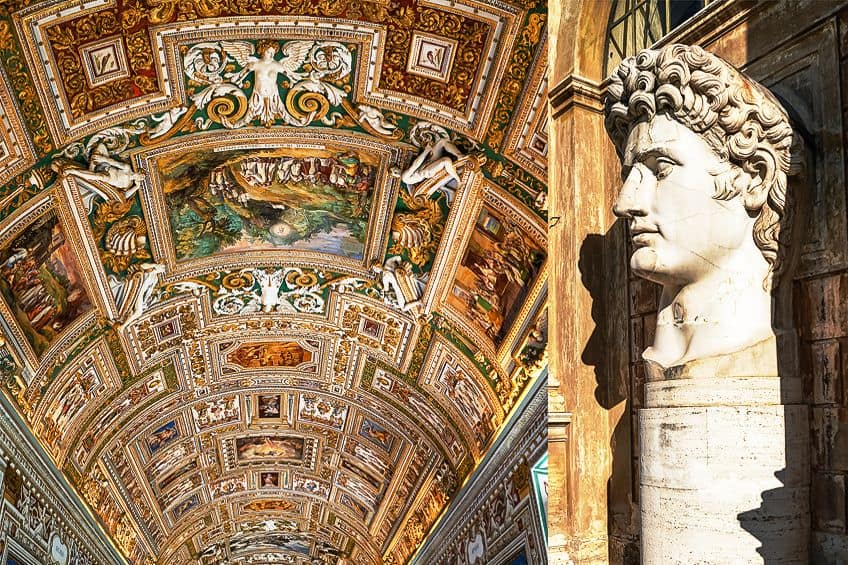
Understanding their motives and ideas might help you appreciate their art more deeply and encourage you to explore similar subjects in your own works. Practicing the techniques of the great masters is one approach to learning from them. Pick a master artist whose style appeals to you and attempt to imitate one of their works or particular elements of their style. You can gain a much better grasp of their approach by mimicking their techniques. This allows you to experiment with different ways while also honing your technical abilities.
Interacting With Art Communities
Sometimes the reason that you feel uninspired is because you are always surrounded by your own work and creative process. This can be overcome by getting involved with local art communities. By attending various exhibitions or markets, you can get a sense of what other people are creating and what is currently working in the art market. Perhaps you will see a prominent theme or style that is currently popular in the market and try to create something inspired by your observations. You can also talk with other artists and find out what new techniques or materials they are using that might inspire you.
Other artists are also able to provide you with feedback on your work, which might help you overcome a creative hurdle or obstacle that you had previously not thought of or overlooked.
Techniques for Gaining Artistic Inspiration
Besides studying other art forms and daily life, there are some practical techniques that you can apply to gain more artistic inspiration. These include meditation, brainstorming, creating a vision board, writing a journal, and traveling. Let’s explore these techniques in greater detail below.
Meditation
Meditation is a discipline in which you direct your attention inward and calm your thoughts and body. It can assist you in gaining insight, and emotional serenity, and accessing your creative wellspring. You make room for new thoughts and inspirations to emerge by establishing a peaceful and centered frame of mind. Make time for meditation, ideally in a peaceful and comfortable location. Find a meditation style that sounds like it speaks to you and your specific needs, such as guided meditation, mindfulness, or mantra meditation. Remove all distractions from your thoughts and concentrate on your breath or a single area of attention. Allow your thoughts, imagery, and impulses to flow freely.
Fully embrace the present moment and have an open mind to any insights or artistic inspiration that comes up during or after your session of meditation.
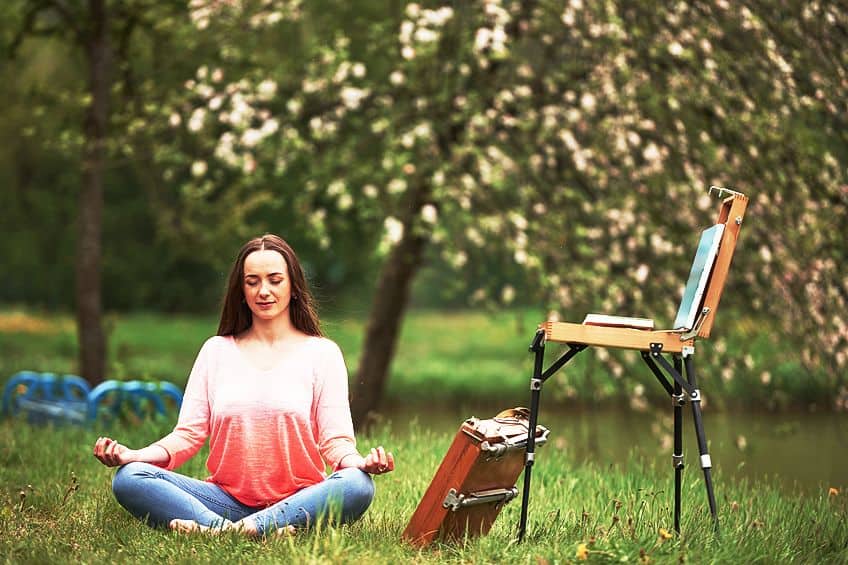
Brainstorming
Brainstorming and mind mapping are also useful approaches for stimulating creativity and generating a variety of ideas. They promote free association, link investigation, and concept visualization. Begin by writing an initial subject in the middle of a blank sheet of paper. Add branches that spread out from the central point, representing many subtopics or concepts relating to the theme. Brainstorm relevant words or images for each of the branches. Let your thoughts and
This might lead to fresh thoughts or unexpected connections. Colors and symbols can be used to improve the visual representation of your thoughts and make connections more visible.
Vision Boards
Vision boards are image-based representations of your dreams, ambitions, or emotions that you want to inspire. They act as a visual reminder of your goals and might encourage you to take steps to make them a reality. Collect various inspiring publications, photos, photographs, phrases, or other visual pieces that correspond to your aspirations or creative vision. As the foundation for your vision board, use a board or a big sheet of paper. Cut out or print images that symbolize your goals, desires, or feelings that you want to express via your artwork.
Arrange the pictures and text on the board to make them aesthetically appealing and meaningful to you.

Journals
Writing and journaling are effective tools for self-reflection, idea exploration, and mental clarity. They enable you to express your ideas, emotions, and discoveries, allowing you to acquire fresh views and insights. Set a timer for a certain amount of time, such as 10 minutes, and write without stopping. Allow your thoughts to flow onto the page as you explore different ideas or emotions relating to your creative practice. Don’t be concerned about grammar or writing properly, the idea is to access your subconscious mind and gain fresh insights. Make sure to have a little notebook on you at all times so that you can quickly jot down any observations you make during the day.
You might see something while you are walking around that captures your eye or have a conversation with somebody that sparks a creative idea.
Traveling
Our wonderful world is an exceptionally beautiful and large planet, filled with an endless array of sights, sounds, smells, and experiences. Finding yourself in a new place away from your usual environment can often serve as a great catalyst for fresh art inspiration ideas. Make sure to take an art journal with you on your journey so that you can write down or sketch any ideas, visuals, or textures that you come across. Visit local museums and galleries wherever you go and get a taste of the local culture and styles. Interact with the different types of people that inhabit these places.
Maybe even try creating some portraits of people that have unique genetic features from your own. Get a feel for the fabrics, patterns, and colors that make the place distinct.
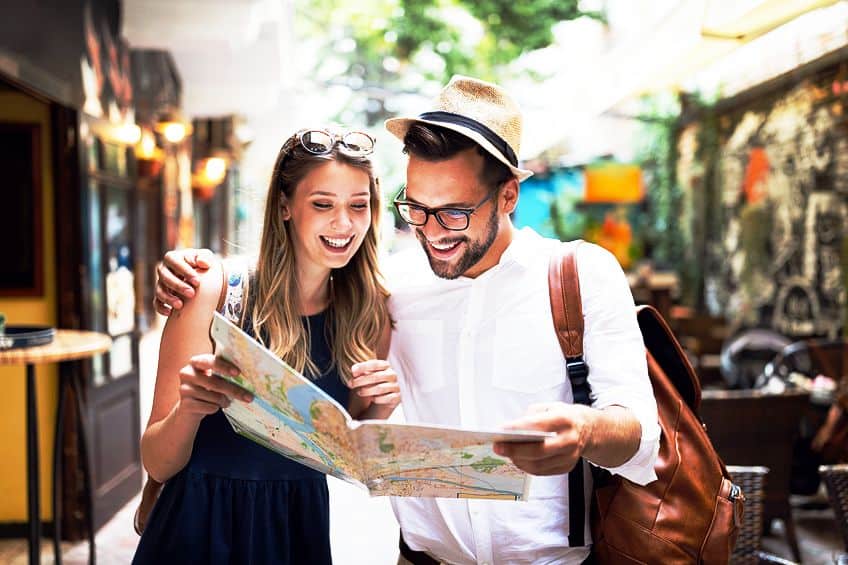
How to Stay Inspired
It’s all good and well-being inspired while you are traveling and living in the moment, but it’s essential to keep that momentum flowing once you return home. One needs to find ways of incorporating inspiration into one’s everyday life if one wishes to maintain that creative flow. That way, artists are able to avoid creative blocks that prevent artistic inspiration from flowing naturally. By surrounding yourself with inspiration, your creative mindset can flourish and you can keep those creative juices flowing effortlessly.
Avoiding Creative Blocks
Creative blocks are the bane of most artists’ existence. There is nothing worse than sitting down opposite a fresh canvas, with all your colors ready to be used, and suddenly finding yourself incapable of finding inspiration for your piece. While it may seem counterintuitive to step away from your workspace in order to be productive, this is exactly what you sometimes need. Sitting for hours on end in the same position can get tiring and expend a large amount of energy. It’s important to step away every now and then, allow yourself to recharge a bit, eat some food, stretch your body, and get some fresh air. This can help to revitalize the mind and make it more receptive to creative thoughts and expression.
Getting stuck in a creative rut can also lead to creative blocks. Perhaps try a new technique, medium, or style to spice things up and spark your imagination again.

Sometimes just going through the motions can take away the joy that comes with creating something. It’s important to keep exploring and learning new things to keep yourself engaged and interested. Don’t worry too much about the imperfections of your work. It’s easy to get discouraged and stop being creative simply because something doesn’t look how you imagined it in your head. Embrace the experimentation, be willing to make mistakes, and your block will disappear in no time.
Making Inspiration a Part of Your Daily Life
As we mentioned earlier, it’s important to see the beauty of everyday objects and places. By observing and appreciating everything around you, more sources of inspiration will make themselves available. Observe the wide array of textures, forms, and colors in everything from plants to architecture. It’s essential to stay engaged with the world of culture and art by visiting galleries in your neighborhood, attending various performances, and watching live musicians, ballets, and so on. Nature is a great source of inspiration too, so make sure to get outdoors on a regular basis.
The natural and organic designs, fresh air, and exercise can do wonders for your creativity.
Cultivate a Creative Mindset
By adopting certain practices and attitudes, you can develop a creative mindset that keeps you in the artistic flow. It’s important to embrace your curiosity and be open to fresh perspectives. Learn as much as you can from a range of different sources and keep trying to attain more knowledge and new techniques and approaches. It’s also important to see challenges as a motivating force instead of obstacles.
Challenges are inevitable, but if you can tackle them with a positive attitude, it will only fuel your drive in the long run.

You must be open to taking creative risks, and with those risks come the challenges of learning something new. Yet, through the experience, we gain insight into new approaches that were previously unavailable to us. While you might have a preferred medium or style, it’s always important to be versatile and adaptable. It will only expand your creative skills, so there really isn’t anything to lose, and everything to gain.
That wraps up our guide on how to get inspiration for art. While finding inspiration for art creation is one of the hardest parts of the creative process, there are many tried and trusted practices that you can integrate into your daily life in order to ensure that your creative juices keep flowing, and that you remain inspired and motivated. Which art inspiration ideas are you thinking of incorporating into your daily practice?
Frequently Asked Questions
Where Do I Find Art Inspiration Ideas?
There are many online sites that allow you to explore the concepts and artworks of other artists. However, it is encouraged to find creative inspiration in the world around and inside of you too. The most original and unique art arises from one’s own personal experiences and worldviews. Be inspired by everything around you and combine your favorite elements in a way that speaks to you on a personal level.
Where Do People Get Their Artistic Inspiration From?
Every artist has their own favorite ways of staying motivated and inspired. You can learn from the great masters of the past, you can visit galleries, and you can experience what other contemporary artists are creating. You can take a walk in nature and find inspiration in the colors, shapes, textures, smells, and sounds of the natural world. You can also find inspiration from other forms of art, such as music, dance, films, and books. Incorporate things into your daily life that make you feel inspired when you see them. If you surround yourself with inspiring people, objects, and experiences, you are bound to be inspired yourself!
In 2005, Charlene completed her wellness degrees in therapeutic aromatherapy and reflexology at the International School of Reflexology and Meridian Therapy. She worked for a company offering corporate wellness programs for several years before opening her own therapy practice. In 2015, she was asked by a digital marketer friend to join her company as a content creator, and it was here that she discovered her enthusiasm for writing. Since entering the world of content creation, she has gained a lot of experience over the years writing about various topics such as beauty, health, wellness, travel, crafting, and much more. Due to various circumstances, she had to give up her therapy practice and now works as a freelance writer. Since she is a very creative person and as a balance to writing likes to be active in various areas of art and crafts, the activity at acrylgiessen.com is perfect for her to contribute their knowledge and experience in various creative topics.
Learn more about Charlene Lewis and about us.






